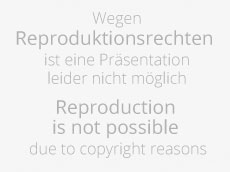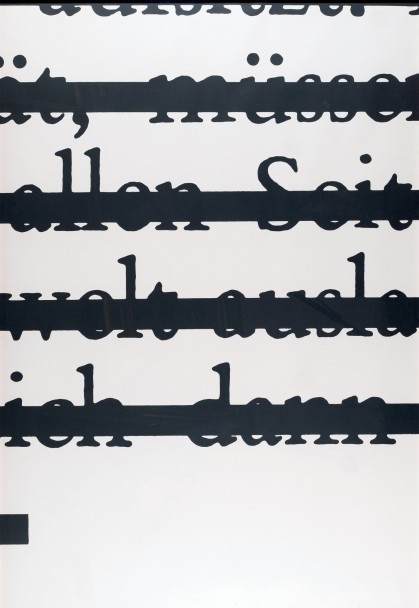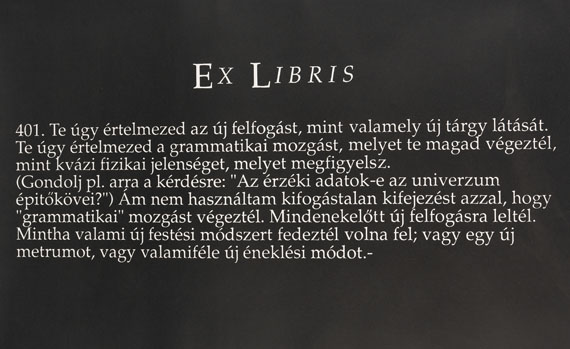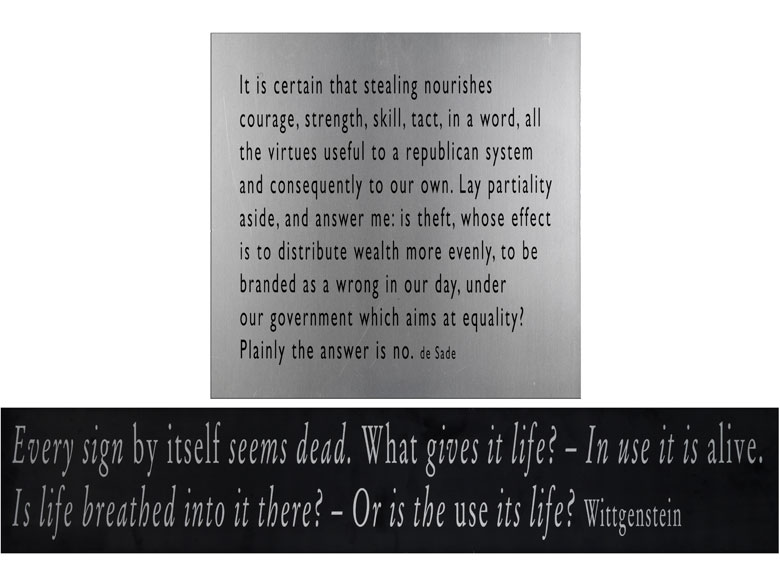Joseph Kosuth One and three hammers 1965 gelatin silver print, hammer and photostat on board photo panel: 25 3/4 x 16 in. (65.4 x 40.6 cm) hammer: 14 x 4 7/8 x 2 in. (35.6 x 12.4 x 5.1 cm) text panel: 24 5/8 x 25 3/4 in. (62.5 x 65.4 cm) This work is accompanied by a production certificate.
Provenance Private Collection Sale: Sotheby's, London, Contemporary Art, February 8, 2001, lot 121 Acquired at the above sale by the present owner Catalogue Essay "The art I call conceptual is such because it is based on an inquiry into the nature of art. Thus, it is... a working out, a thinking out, of all the implications of all aspects of the concept 'art,'... Fundamental to this idea of art is the understanding of the linguistic nature of all art propositions, be they past or present, and regardless of the elements used in their construction." - Joseph Kosuth (The Museum of Modern Art, MoMA Highlights, New York, 1999, p. 257) The idiosyncratic American artist Joseph Kosuth approaches art with conceptual and intellectual reasoning rather than artistic intuition. Like Marcel Duchamp he is primarily concerned with the definition and meaning behind an object. The creative process is achieved through his method of conceptualization and is highlighted by his critical questioning of visual representation and perception. The present lot, One and three hammers, 1965, is a prime example of Kosuth’s adoption of words and language as his artistic tools. Devoid of everything aside from the mechanically printed words, the work can be seen as both a visual and a verbal code, one that invites the viewer to engage with the dialectical relationship between the idea of art and the realized object. Kosuth’s preoccupation with language, meaning, relationships and the interpretation of visual information is fundamentally an enquiry into the very nature of any artwork. Read More
Joseph Kosuth One and three hammers 1965 gelatin silver print, hammer and photostat on board photo panel: 25 3/4 x 16 in. (65.4 x 40.6 cm) hammer: 14 x 4 7/8 x 2 in. (35.6 x 12.4 x 5.1 cm) text panel: 24 5/8 x 25 3/4 in. (62.5 x 65.4 cm) This work is accompanied by a production certificate.
Provenance Private Collection Sale: Sotheby's, London, Contemporary Art, February 8, 2001, lot 121 Acquired at the above sale by the present owner Catalogue Essay "The art I call conceptual is such because it is based on an inquiry into the nature of art. Thus, it is... a working out, a thinking out, of all the implications of all aspects of the concept 'art,'... Fundamental to this idea of art is the understanding of the linguistic nature of all art propositions, be they past or present, and regardless of the elements used in their construction." - Joseph Kosuth (The Museum of Modern Art, MoMA Highlights, New York, 1999, p. 257) The idiosyncratic American artist Joseph Kosuth approaches art with conceptual and intellectual reasoning rather than artistic intuition. Like Marcel Duchamp he is primarily concerned with the definition and meaning behind an object. The creative process is achieved through his method of conceptualization and is highlighted by his critical questioning of visual representation and perception. The present lot, One and three hammers, 1965, is a prime example of Kosuth’s adoption of words and language as his artistic tools. Devoid of everything aside from the mechanically printed words, the work can be seen as both a visual and a verbal code, one that invites the viewer to engage with the dialectical relationship between the idea of art and the realized object. Kosuth’s preoccupation with language, meaning, relationships and the interpretation of visual information is fundamentally an enquiry into the very nature of any artwork. Read More








.jpg)


.jpg)



Testen Sie LotSearch und seine Premium-Features 7 Tage - ohne Kosten!
Lassen Sie sich automatisch über neue Objekte in kommenden Auktionen benachrichtigen.
Suchauftrag anlegen